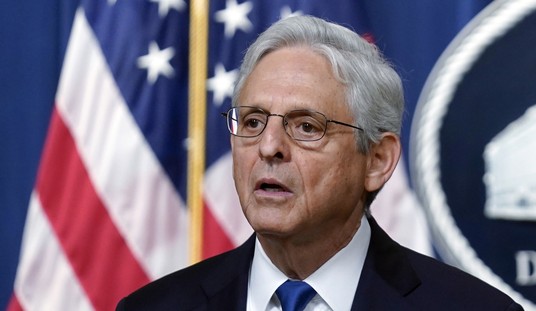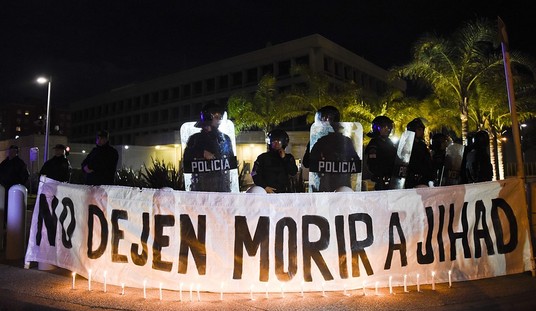George Veith’s six hundred page Black April, an account of the fall of South Vietnam in 1975 is a must-read for anyone interested in that conflict. The end game of a war illuminates its strategic assumptions like nothing else, for there at the last the assumptions made by both sides are taken to their logical conclusions and their implications are magnified to the ultimate degree.
The Fall of Vietnam, readers may be interested to learn, was a surprise to both parties. It was a surprise to those on both sides, who thought the South would collapse immediately after the American withdrawal. It survived with such tenacity even after Congress effectively left it without enough ammunition to defend itself that the North Vietnamese actually debated whether to wait 3 or so years before restarting the offensive. But when the Fall actually started it came with a speed that shocked even Giap.
The Politburo had decided, even while it was signing the Paris Peace accords, that it would violate them. The question was when. That Giap was the architect of the ultimate effort there was no doubt. Stung by the defeat of the 1968 and 1972 offensives, his plan for a renewed attack was met with some skepticism. But he returned from what appeared to be a semi-exile in Russia to create a secret planning group, the Central Cell, which drew up the plan for the 1975 offensive.
It was, readers may again be surprised to learn, on somewhat a more modest scale than the failed 1972 effort. North Vietnam too was on its last legs. It was at the point of conscripting child soldiers into its units. This was to be the last throw for both sides.
Giap’s basic idea was simple. He would take advantage of the new extension of the Ho Chi Minh trail, really a highway by then, and th fuel pipeline which ran its length to overwhelm the ARVN. In reality, the Vietnam War was fought with the allied lines facing West along an 800 mile front, with the PAVN holding the border and South Vietnamese territory along it. The PAVN objective was to whipsaw the ARVN around, and when they were unbalanced, to drive to the coast. Then having done that, they would essentially defeat the Republic of South Vietnam in detail.
With the new trail, Giap had the ability to switch axes of attack and ripple his thrusts along this long front. Saigon’s commanders unintentionally made this easier by making it hard to switch reserves between I, II and III corps without Thieu’s permission — a rigidity that was to have tragic consequences.
There hovered over the battlefield the specter of the “enclave strategy” — a concept that had been kicking around for some years — which held that the only hope for South Vietnamese survival lay in shortening their lines to exclude the now-indefensible I Corps area [fixed] and concentrate South Vietnam’s remaining reserves in the South. The North Vietnamese feared this and the new logistical poverty of the South cried out for it.
But the proximate roots of the South Vietnamese defeat in 1975 lay in Thieu’s determination to hold on to I Corps as long as he could, and when he could no longer, to precipitately embrace the enclave idea by ordering a retreat South — a withdrawal under assault by armor, artillery and masses of troops that could not be effected. That belated embrace of the enclave idea, implemented in mid-crisis, turned into a rout. Masses of terrified civilians, often the relatives of the South Vietnamese soldiers themselves, swelled the retreat and ultimately culminated in the Fall of Saigon.
Yet none of this obscures the fact which Veith highlights. It was Vietnam’s war too, not the conflict between American imperialism and the noble Vietnamese that the anti-war crowd portrayed. The Vietnam war was at its heart a civil war between millions of Indochinese people who choose Communism on the one hand and millions of people who rejected it on the other.
Their story was largely untold by a press intent on portraying the South Vietnamese as lackeys and misrepresenting the war in such a way that even today, decades after the conflict ended, it remains probably the most mis-remembered conflict in recent times. There are untold numbers who can tell you with amazing accuracy, how the different battles of the Second World War was fought and yet who have no idea of the titanic battles between the Vietnamese.
In the main it was fought, as Veith shows, pretty much like a conventional war: with armor, artillery, infantry attacks and aerial strikes. The PAVN had T-54s, APCs, manpads, air defense regiments, artillery batteries, signals intelligence, deception plans — the whole works. It was nothing like the Black Pajama versus imperialist lackey narrative that much of the press pushed.
Those unfamiliar with the events of 1975 will be surprised, scandalized even, by the sheer tenacity and creativity of the South Vietnamese Army in its death agonies against this massive force. The PAVN routinely shelled the retreats, including the civilians, killing thousands of noncombatants and at one point the South Vietnamese Air Force thought of something to hold up the North Vietnamese.
During the retreat from Xuan Loc, ARVN radio direction-finding teams located the 341st Division Forward Headquarters from the heavy communication traffic as the unit frantically tried to catch the retreating South Vietnamese. The VNAF decided to strike using a deadly weapon, the CBU-55, a fuel/air cluster bomb designed originally to clear minefields. As described by CIA analyst Frank Snepp, “With the help of DAO technicians, South Vietnamese pilots rigged up a special bomb rack for . . . the terrifying killing device known as the CBU-55. . . . A C-130 transport with a CBU on board took off from Tan Son Nhut, circled once over Xuan Loc to the east, and dropped its load virtually on top of the command post of the 341st Division just outside the newly-captured town. The casualties were tremendous. Over 250 PAVN troops were incinerated or died from suffocation in the post-explosion vacuum.”
Once the Communists determined the nature of the attack, they loudly accused Saigon of “flouting all norms of morality” and denounced the officials who ordered the use of the weapon as “war criminals.”
Not only did they improvise a MOAB attack, the South Vietnamese airforce actually scraped together an improvised ARCLIGHT consisting of 40 A-37s attacking a target by night using beacons to guide their release. But in the end, it was futile.
Once the South Vietnamese had broken, the North virtually emptied its barracks of every soldier that it had and sent them south for the climactic battle for Saigon. It was in some sense an imitation, perhaps a conscious imitation, of Stalin’s climactic battle for Berlin. The scale was staggering.
To accomplish this strategy, the People’s Army at the gates of Saigon had a force of five corps comprising fourteen divisions and another ten independent regiments and brigades—not counting the various B-2 Front sapper units. In addition, there were another two divisions operating nearby. While the RVNAF could barely muster 110,000 troops to defend Saigon, according to PAVN figures, “our entire combat forces totaled 270,000 troops (250,000 main force troops and 20,000 local force troops) and 180,000 strategic and campaign-level rear services troops.”
If that is true, then together with other forces in-country during the Saigon attack, PAVN had more troops in South Vietnam—something close to 550,000—than the Americans did at the height of the U.S. commitment, around 543,000.
I could not help but think as I read these words, what would have happened if an allied amphibious force had landed north of that PAVN force. But that would be alternative history; and in the real history South Vietnam fell. But it is history which George Veith is determined that we shall not forget, if ever we had learned it in the first place.
The Three Conjectures at Amazon Kindle for $1.99
Storming the Castle at Amazon Kindle for $3.99
No Way In at Amazon Kindle $8.95, print $9.99










Join the conversation as a VIP Member